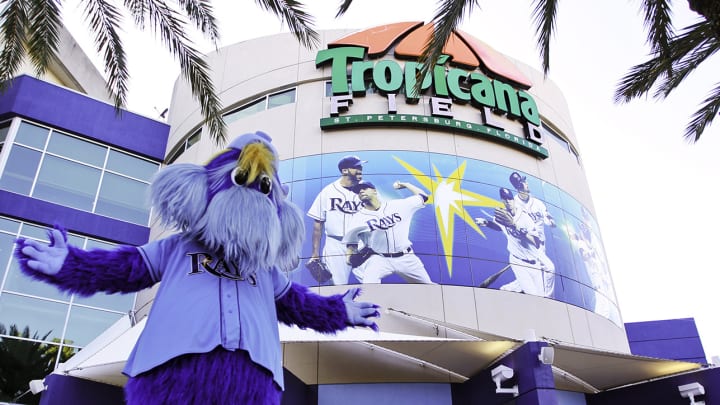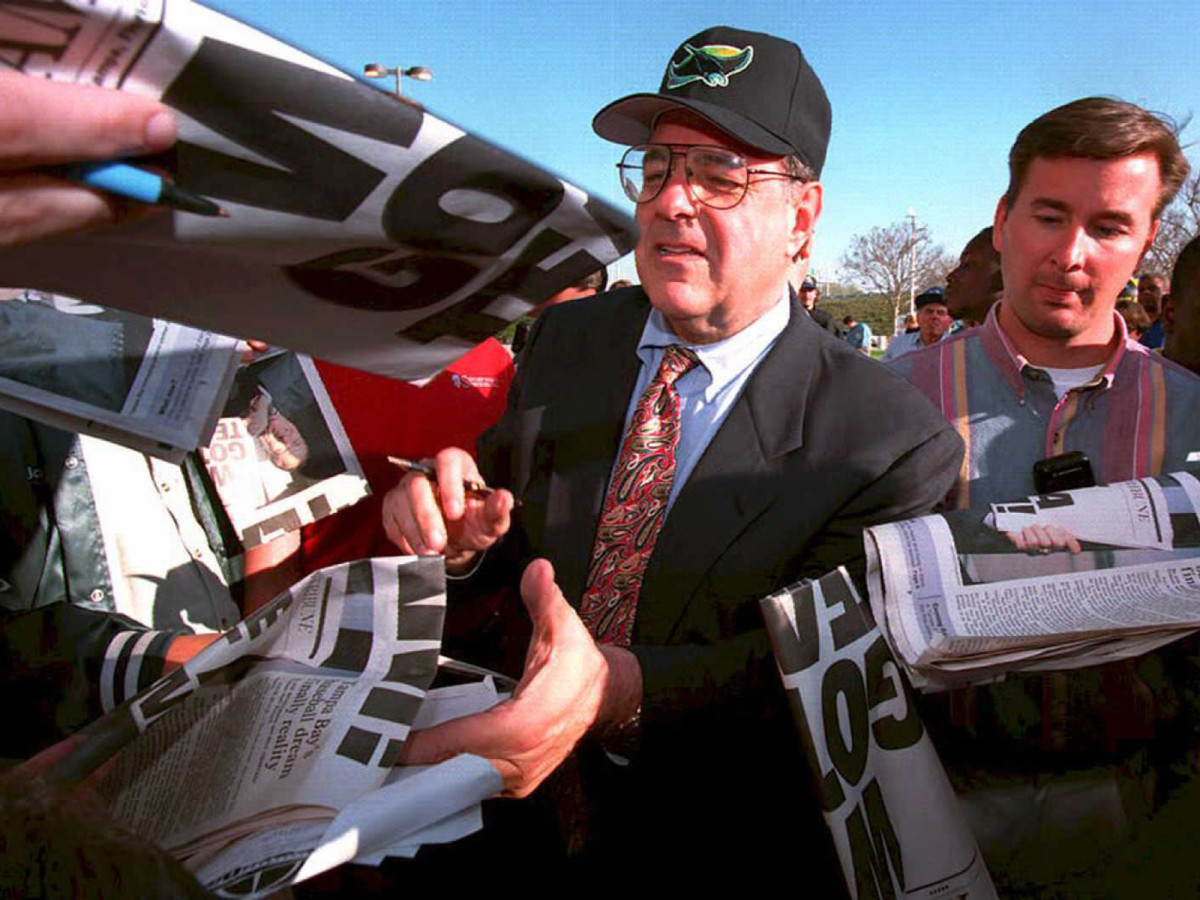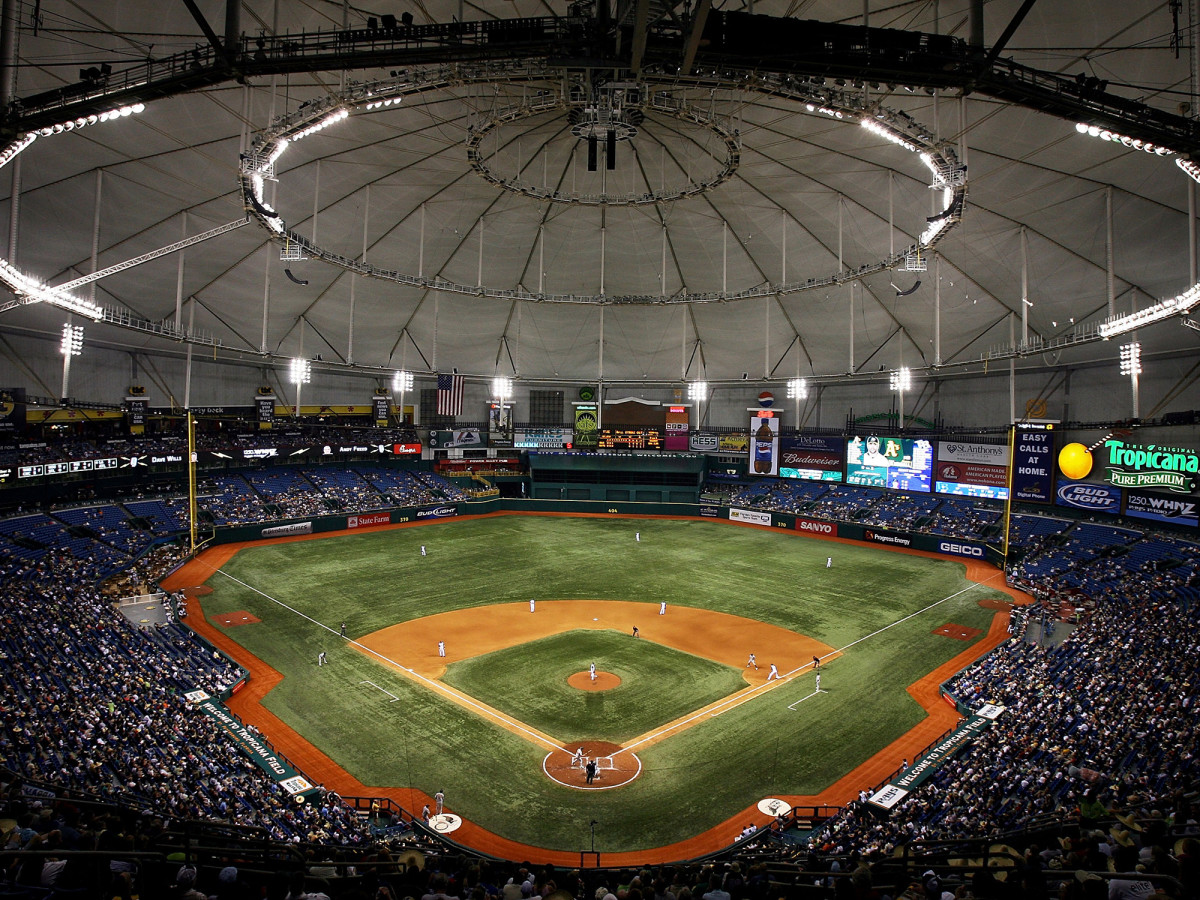Rays' Outrageous Montreal Plan Only Exists to Get New Stadiums Built—Again

This story appears in the July 1, 2019, issue of Sports Illustrated. For more great storytelling and in-depth analysis, subscribe to the magazine—and get up to 94% off the cover price. Click here for more.
Last week the MLB executive council gave the Tampa Bay Rays permission to explore becoming the Central Florida Rays of Quebec. With the team's efforts to get traction on a new, publicly-financed ballpark in Tampa stalled, this plan is designed to let the Rays spend the first half of each season playing home games in a new, open-air ballpark in Tampa Bay and the second half in a new ballpark in Montreal.
That's right: A team that hasn't been able to get one new ballpark built in a decade of trying now has its sights set on two of them. In this, the Rays may be finally using their ill-loved home to do what it does best: get other ballparks built.
See, Tropicana Field, located in St. Petersburg across the bay from Tampa itself, has never been able to bring the boys to the yard. The Rays, despite four playoff appearances and a World Series run in the last dozen seasons, and a 90-win campaign in 2018, have finished last in the AL in attendance the last four years. Even after leading the AL East for 44 days with a young, exciting team, they are last in the AL. The Rays haven't drawn even 1.5 million to St. Pete since 2013.
What the Trop has always been able to do, however, is bring the yard to the boys—other boys, that is. St. Petersburg began construction on the Suncoast Dome in the late 1980s on spec, even as then-commissioner Peter Ueberroth made it clear that the city was not in line for an MLB team. Two years before Field of Dreams, St. Pete said, "If we build it, they will come."

They almost did. The White Sox used the threat of a move to Florida to wrangle a new Comiskey Park from Illinois taxpayers in 1988. Four years later, Giants owner Bob Lurie tried to sell his team to a group based in Tampa, only to see his deal rejected by the National League. Lurie was then steered to Peter Magowan's group, which purchased the team in November, signed Barry Bonds in December and eventually financed—with some infrastructure money from the city—what we now call Oracle Park, in downtown San Francisco.
The Trop's power to create isn't limited to baseball parks. After three seasons hosting the expansion Tampa Bay Lightning, the Trop watched the NHL team leave for the Ice Palace, a new arena in downtown Tampa, in 1996.
So we've come full circle. The Suncoast Dome was born as a stalking horse for new parks in Chicago and San Francisco. Now the old Tropicana Field is dying as a stalking horse for new ballparks in Montreal and Tampa. That's all this is, of course. This plan, which has less chance of being implemented than the Expos do of winning the 2019 World Series, exists solely to ratchet up the pressure on the locals to cough up taxpayer funding for an ATM with dugouts, to encourage the good people of Montreal to do the same and to send a signal to places like Portland and San Antonio that MLB is open for business.

The Suncoast Dome was obsolete before the Rays even played their first game there, an Astrodome in a Camden Yards world. The new generation of parks would be open to the air, with wide concourses, retro features and 21st-century amenities. Even a modern ballpark, though, would never have overcome the dome's three strikes: Location, location, location. Nestled in St. Petersburg, it sits across the bay from the population center of Tampa and the inland suburbs, with limited road access and almost no public transportation. The Rays sold 2.5 million tickets as an expansion team in 1998 and never cracked two million again.
This isn't Miami, though, where some of the worst ownership groups in baseball history have alienated potential fans. No, there's a fan base in Tampa that supports the team; the Rays' TV ratings are consistently solid, and the 2008-10 teams that won two division titles and a pennant drew 1.8 million a year. Those fans just don't have the helicopters and speedboats it takes to make a game in St. Petersburg on a Tuesday night a viable option. If the Suncoast Dome was a case of "If you build it, they will come," the fans have replied, "We'll come, but build it closer."
So you can stop imagining the full-employment program for tax attorneys that the Montreal/St. Pete ExRays would be. This is just yet another clunky attempt by MLB to shake down a city, any city, for a ballpark. This is the Suncoast Dome's final job.
